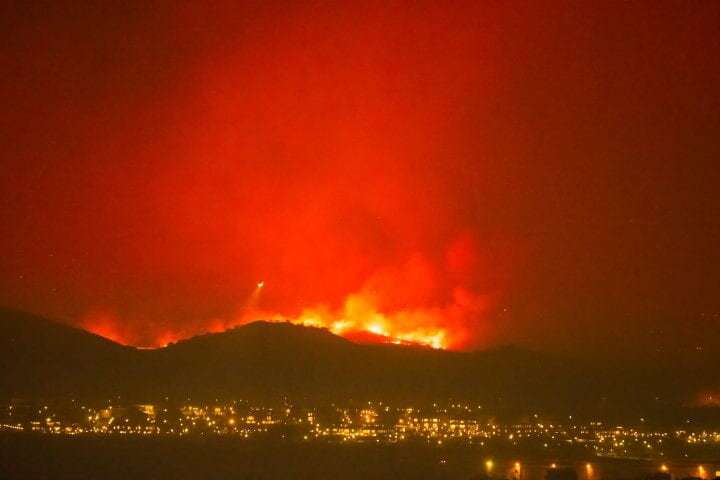This article has been reviewed according to Science X's editorial process and policies. Editors have highlighted the following attributes while ensuring the content's credibility:
fact-checked
peer-reviewed publication
trusted source
proofread
Human-caused climate change to blame for increase in California's wildfires, says study

In the quarter century between 1996 and 2020, wildfires in California consumed five times more area than they did from 1971 to 1995. Researchers at the University of California and other international institutions have concluded that nearly all of the increase in scorched terrain can be blamed on human-caused climate change.
For a paper published in Proceedings of the National Academy of Sciences, they used climate modeling to find that "anthropogenic forcing"—conditions created by human fossil fuel burning and land use practices—accounted for a 172% expansion in burned area over natural inputs alone.
"The 10 largest fires in California history have all occurred in the past two decades, and five of those have happened since 2020," said co-author Amir AghaKouchak, UCI professor of civil and environmental engineering. "Through our study, it has become clear that anthropogenic climate change is the major driver of this increase in wildfire damage."
Some of the key factors linking wildfire risk to climate change outlined in the paper include below-average precipitation, higher temperatures in the spring months, lower springtime mountain snowpack, hotter summer temperatures, more frequent heat extremes and a decrease in the number of rainy days during fire season.
The researchers said that climate change and variability also are to blame for a larger vapor pressure deficit, the difference between the amount of moisture in the atmosphere and how much moisture the air can hold when it's saturated. This contributes to arid conditions and dried-out fuels on the forest floor and canopy that feed wildfires.
AghaKouchak said that as wildfires cause enormous environmental destruction, they also wreak havoc on humans, exacerbating mortality and bad health outcomes, with people of lower socioeconomic status suffering the worst impacts.
In their modeling exercises, the researchers relied on the Detection and Attribution Model Intercomparison Project, part of the widely used Coupled Model Intercomparison Project Phase 6. In addition to quantifying the effects of anthropogenic climate change on forest fires in California since 1971, the team used the models to explore future spread of the Golden State's burned area through 2050.
"We found that we can expect as much as a 50% increase in burned area from 2031 to 2050 relative to the past few decades," AghaKouchak said.
He added that while the study paints a bleak picture of human influence on the Earth system, the very fact of anthropogenic climate change-driven fires can be a cause for hope.
"Our paper makes it clear that the problem is ours to fix and that we can take steps to help solve it," AghaKouchak said. "By acting now to reduce our carbon dioxide emissions and pursue more sustainable transportation, energy production and agricultural practices, we can reduce the adverse effects of global climate change."
More information: Marco Turco et al, Anthropogenic climate change impacts exacerbate summer forest fires in California, Proceedings of the National Academy of Sciences (2023). DOI: 10.1073/pnas.2213815120
Journal information: Proceedings of the National Academy of Sciences
Provided by University of California, Irvine




















